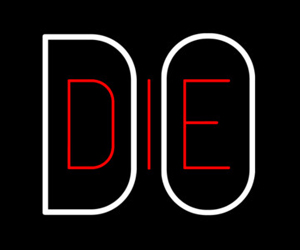 Storytelling is a tradition that will exist as long as humans inhabit the Earth. It’s in our DNA. The tools we use, however, have changed and will continue to change. We’ve moved on from cave paintings to the written word, from parchment paper to word processors. We’ve even seen the printed word slowly disappear as we move on to electronic readers, like the Kindle and Nook, which allow users to store hundreds of books on a single device.
Storytelling is a tradition that will exist as long as humans inhabit the Earth. It’s in our DNA. The tools we use, however, have changed and will continue to change. We’ve moved on from cave paintings to the written word, from parchment paper to word processors. We’ve even seen the printed word slowly disappear as we move on to electronic readers, like the Kindle and Nook, which allow users to store hundreds of books on a single device.
Another monumental change has occurred just in the past 20 months or so. With the introduction of the iPad and other tablet devices that followed shortly thereafter, readers are able to dive deeper into content than ever before. So it’s no surprise that when Razorfish chairman Clark Kokich wanted to write a book, he decided that the only appropriate way to do so was to bypass traditional publishers and create it as an interactive application. See the demo below.
We at Post-Advertising wholeheartedly believe that the marketing landscape has changed, bringing forth a new era in which marketers must stop simply saying and start actually doing: creating useful and entertaining content that audiences enjoy so much, they’re compelled to share it. Brands can’t simply interrupt and demand attention. This is nothing new, but it is important to think about when you look at this book, er, app.
So while Clark’s book, aptly titled Do or Die, explains how some enlightened companies are putting doing above saying in weird and wonderful ways, it’s the book itself, or rather the fact that it’s not a book at all, that we find so post-advertising. To get it published, Clark wrestled with the antiquated methods of traditional publishers, including a six-week tug-of-war over what the title should be (after Clark himself sent McGraw-Hill 39 titles he deemed acceptable, none of which were approved), until he realized that he was making the same mistakes brands do. He was taking traditional routes to tell his story instead of exploiting the technologies that have recently emerged.
Shortly after the tug-of-war, Clark realized his vision:
“A book optimized for the iPad and other tablets — one that would include videos of interviews with CEOs and CMOs [including former Kodak CMO Jeff Hayzlett, Head of PepsiCo Digital Shiv Singh, GroupM CEO Rob Norman and Story Worldwide CEO Kirk Cheyfitz], plus ways to view case histories by allowing readers to access live websites and Twitter feeds embedded into the stories, and then give readers a way to comment and share ideas with each other. In short, it would be the ultimate expression of practicing what we preach.”
At $9.99, the app is priced comparable to other books in its category yet boasts far more content and interactivity than any standard print version could dream of offering (no, your QR codes don’t cut it). Instead of reading brief excerpts of case studies, readers can click through to in-depth case studies that include high-resolution photography and embedded videos. If you’re not much for reading, included in the app is an audio version as well.
Since we believe that this is the future of publishing, the question is not “Why aren’t more authors doing this?” but “Whose next book does it make sense to publish as an in-depth app?” Seth Godin’s? Gary Vaynerchuk’s? Let us know in the comments.


